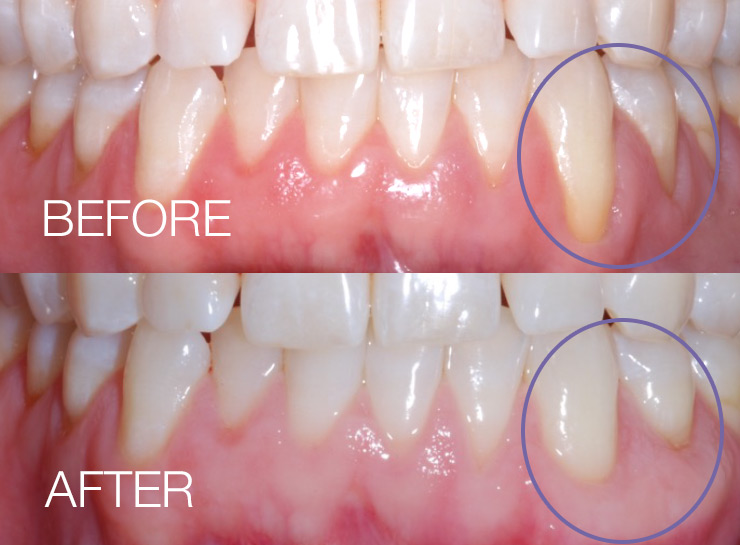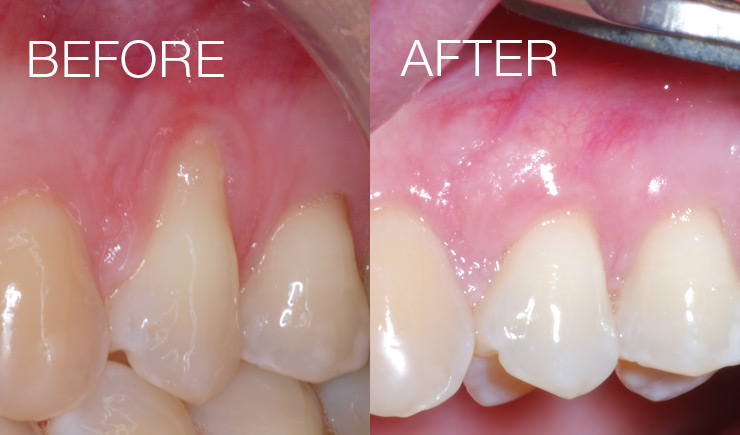- When gum tissue (gingiva) has been destroyed by periodontal disease or aggressive tooth brushing, among other factors, regrowth can be actively encouraged by way of soft tissue grafting (also called gum/gingival grafting, periodontal plastic surgery).
- This procedure helps cover exposed root surfaces, decrease tooth sensitivity, improve esthetic appearances and health of gums and teeth, helps keep teeth longer, and protect against progressive gum recession.
- There are different types of grafting and different sources from which tissue can be taken. Sometimes gum tissue is taken from your own palate (roof of your mouth), and sometimes from donor tissue. In both cases, the graft encourages the growth of more resilient and plentiful gums at the recipient site.
- When donor tissue is taken from your palate, a portion of either the overlying (free gingival graft) or underlying portion (connective tissue graft) is used, depending on the indications in your particular circumstance. This type of grafting has been performed for decades by periodontists and is an integral part of our specialized training.
- This is sometimes performed in preparation for orthodontic tooth movement if the anticipated plan is to move teeth in a direction that will likely contribute to the gums receding.
- More recently, soft tissue grafting is performed in preparation for dental implant placement, or years after dental implant placement, to correct esthetic or functional defects in the gums.
For more interesting information click on the following:



